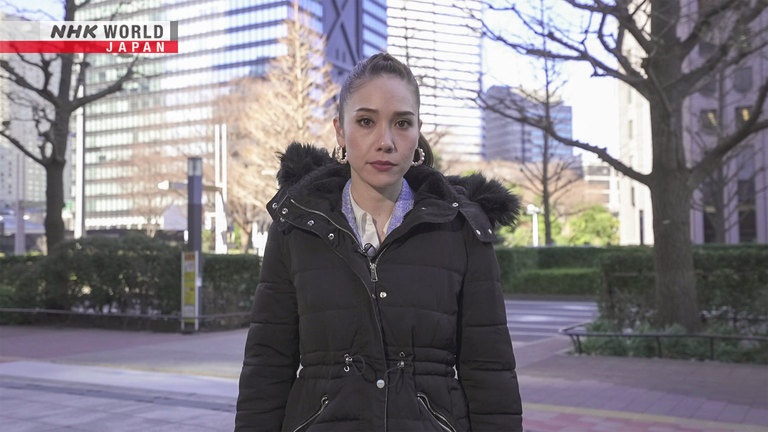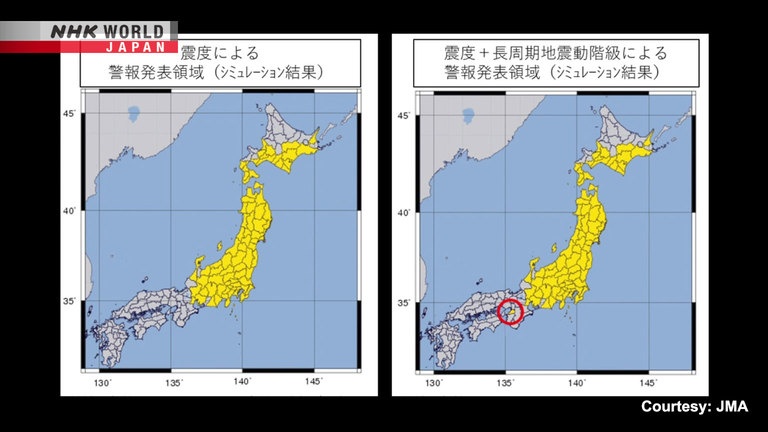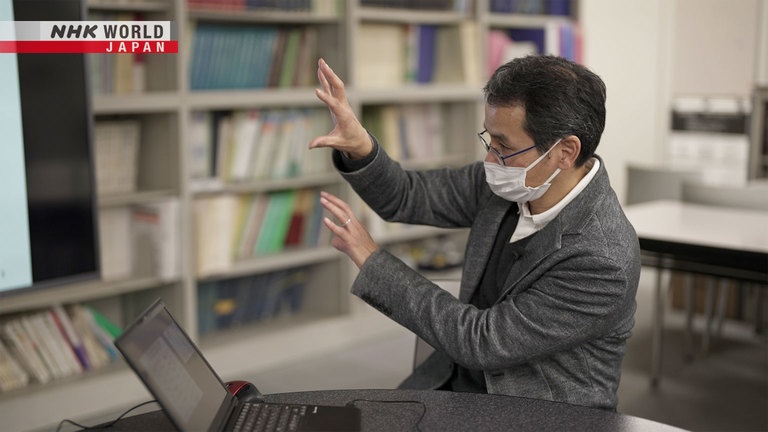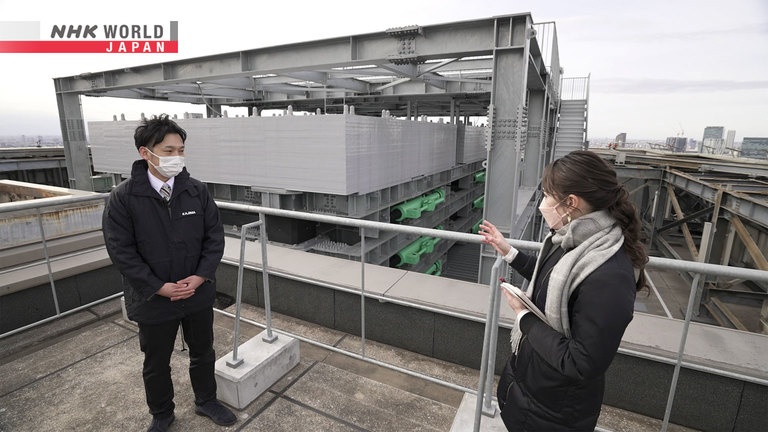#27 Quake-resistant Skyscrapers
On March 11, 2011, a huge earthquake occurred off Japan's Tohoku coast. Skyscrapers 400 kilometers away in Tokyo's Shinjuku district continued swaying for 13 minutes. And 770 kilometers away in Osaka, tall buildings swayed for more than 10 minutes. This swaying was caused by "long-period seismic waves," which can travel long distances at frequencies that resonate with high-rise buildings in particular. In this episode, we'll look at some of the steps being taken to address this problem, including heavy weights installed atop high-rises.




Transcript
Japan has a long history of natural disasters.
Now, power of science is helping to overcome it.
BOSAI: Science that Can Save Your Life.
On March 11, 2011, a massive magnitude 9.0 earthquake occurred off the Sanriku coast in Japan's Tohoku region.
It caused a skyscraper some 400 kilometers away in Tokyo's Shinjuku district to continue shaking for 13 minutes, with its top floor swaying more than a meter.
And 770 kilometers away in Osaka, another high-rise building shook for over 10 minutes, with its top floor swaying nearly 3 meters.
The quake itself caused enormous damage.
But people were also shocked to learn that an earthquake could shake skyscrapers so far away like that.
But why exactly did skyscrapers so far from the epicenter shake so much during this earthquake?
With its nationwide network of seismometers, the Japan Meteorological Agency monitors for earthquakes and tsunamis 24-7.
Machigashira Daisuke is a specialist in earthquake and tsunami disaster prevention.
He says that 2011's earthquake had some distinctive characteristics.
What was so different about this earthquake?
It was an ocean trench-type earthquake off the
Sanriku coast. It was a 9.0 magnitude quake.
And it was long-period seismic waves that caused
so much damage so far from the epicenter.
"Long-period" refers to large slow-shaking seismic waves that take at least 2 seconds to complete one up-and-down cycle.
The higher the magnitude, the stronger and longer the shaking caused by the earthquake's long-period waves.
Moreover, longer-period waves are less likely to weaken than shorter-period waves, so they can travel farther.
Seismic waves will cause more shaking when they encounter more easily displaced soft sedimentary soils.
In the 2011 Tohoku earthquake, these long-period waves greatly shook buildings far from the epicenter, especially skyscrapers.
Although public awareness rose with the 2011 earthquake, these long-period waves have repeatedly been detected since the year 2000,
including in the 2016 Kumamoto earthquake.
They're a known issue.
From February 2023, the JMA will use long-period
wave information in its earthquake warnings.
Japan's Meteorological Agency has come up with a 4-tier system to categorize the strength of long-period wave-related tremors.
Previously, predicted seismic intensity of 5 or more warranted an earthquake alert.
Under the new system, "standing is difficult" Class 3 and "standing is impossible" Class 4 tremors, if predicted, will also warrant an earthquake alert.
A computer simulation of the 2011 Tohoku quake shows that, under the new standards, the southern part of Osaka Prefecture would receive an earthquake alert,
which it wouldn't have before.
There's said to be a 70 to 80% chance of a major quake in the Nankai Trough region within the next 30 years.
It could cause even greater long-period tremors than the Tohoku earthquake did.
A Nankai Trough megathrust earthquake could emit
long-period seismic waves across a wide area.
Being far away doesn't mean you're safe.
When people in high-rise buildings get an
earthquake alert, they need to ensure their own safety.
Across Japan, there are thousands of skyscrapers, and ever more being built.
Long-period waves are a particular concern for the highest floors of these buildings.
How do long-period seismic waves shake tall buildings so far away for so long?
We asked the experts.
Yoshiaki Hisada is an earthquake engineering specialist.
He uses numerical computer simulations to study long-period waves and other seismic conditions, as well as the dangers they pose to high-rise buildings.
Why do long-period waves cause
skyscrapers to shake so much?
Each building sways differently, called its "natural
period," depending on its height, weight, and stiffness.
When a seismic wave's period matches
a building's natural period, it causes "resonance."
When the "period" of time it takes a tremor to move up and down one cycle, matches the inherent "natural period" of time it takes a building to sway back and forth,
that's called "resonance."
When those timings match up and "resonate" together, the tremor causes the building to sway more.
Taller buildings with longer "natural periods" sway more from wider seismic wavelengths.
And shorter buildings sway more from narrower wavelengths.
Skyscrapers are less affected by shorter seismic waves.
But with longer seismic waves with similar periods, the extra energy from the tremor pushes the building to sway even more.
Hisada used data from the 2011 Tohoku quake to simulate the sway of a 29-story building.
At first, it doesn't move that much.
But as time goes on, we see how greatly resonance can amplify the shaking.
How did you come up with this simulation?
This was based on data readings taken
during the 2011 Tohoku earthquake.
We applied those records to this
building model to see how it shook.
On the 1st floor, the building swayed up to 8 centimeters.
On the 29th floor, it swayed up to 37 centimeters.
At first glance, it seems the higher the floor, the greater the sway.
But, the 22nd floor actually swayed less than the 16th floor.
How could that be?
Long-period waves shake the upper floors.
But shorter waves early on, shake
the middle floors due to "higher-order modes."
The model on the left represents an entire building swaying at its full-length natural period, called its "first mode."
The whole building moves as one.
The higher the floor, the stronger the shaking.
The right shows the building swaying at its second longest natural period.
The middle of the building sways greatly, and in the opposite direction as the top.
This type of motion is called its "second mode."
Buildings have multiple natural-period modes like these.
When the period of a seismic wave matches one of a building's modes, the building responds in a particular way.
This graph shows the periods of the waves that shook the 29th floor in the 2011 Tohoku quake.
Most of the shaking was caused by waves with a period of around 3 seconds, which is this building's "first mode."
Next were from waves with a period of around 0.9 seconds, which is its "second mode."
It sways in the middle, not in between,
but again at the top. That's a secondary mode.
The 16th floor likely shook more than the 22nd because of a combination of 1st and 2nd modes.
The natural periods can make the movements of a skyscraper quite complex.
Hisada also ran simulations of Nankai Trough megathrust earthquakes.
They showed ongoing sway, much greater than in the 2011 Tohoku quake.
Why might that be?
Soft layers called "accretion zones" are scraped
off the surface of the subducting Pacific plate.
This creates pathways called "channels,"
which transmit the earthquake's energy on to Tokyo.
The closer proximity is also a major factor.
Tokyo isn't far from the possible epicenter of a major Nankai Trough quake.
And, long-period waves could easily travel through the soft sedimentary layers found on Tokyo's Kanto Plain.
Nevertheless, buildings over 200 meters tall are going up one after another in Tokyo.
What steps are in place to address long-period seismic waves?
One common solution is "base isolation."
Treated rubber is placed underneath, separating the building motion above from the ground motion below.
This reduces the amount of shaking transferred to the building.
Another is "vibration control."
Dampers are installed on pillars and support beams, reducing seismic wave energy.
Earthquake mitigation equipment is usually found in the basements and inner structures of high-rise buildings.
But a new type of damper sits on the roof of this skyscraper.
In 2022, a more modern solution was retrofitted onto this high-rise, originally completed in 1994.
This is a vibration control device installed on the roof.
It's in three sections, weighing a total of 1350 tons.
In an earthquake, they slide to help reduce the sway.
This is a "tuned mass damper."
When the building begins to sway, this counterweight lags behind slightly, which cancels out some of the sway.
The three sections are stacked with treated rubber.
450-ton weights are placed on top.
And the three stacks are connected.
So, that's extremely heavy.
To be effective, it has to be about 2% of the total
building weight. It has to be heavy for large quakes.
When the building begins to sway, the connected weight slides side-to-side, but lags behind, which counteracts the sway.
The weight can slide up to 1.5 meters, and is "tuned" against the natural period of the building.
Simulating the seismic waves of the 2011 Tohoku earthquake, they've been able to reduce the amount of sway by 50%.
They've also greatly reduced the duration of the sway.
And, a new approach under development uses a part of the skyscraper itself to dampen seismic energy.
The floors above are structurally decoupled from the floors below, and serve as a weight to cancel out shaking.
In experiments, the upper floors of a building modeled with this approach swayed 30% less than in the model without.
New approaches are making skyscrapers more resistant to earthquakes.
That being said, no matter how much technology progresses we should all remember how important it is to be ready when an earthquake occurs.
We can be well prepared by securing office equipment and furniture, as well as deciding how to confirm the safety of our loved ones and those around us.
Let's be proactive with disaster prevention.